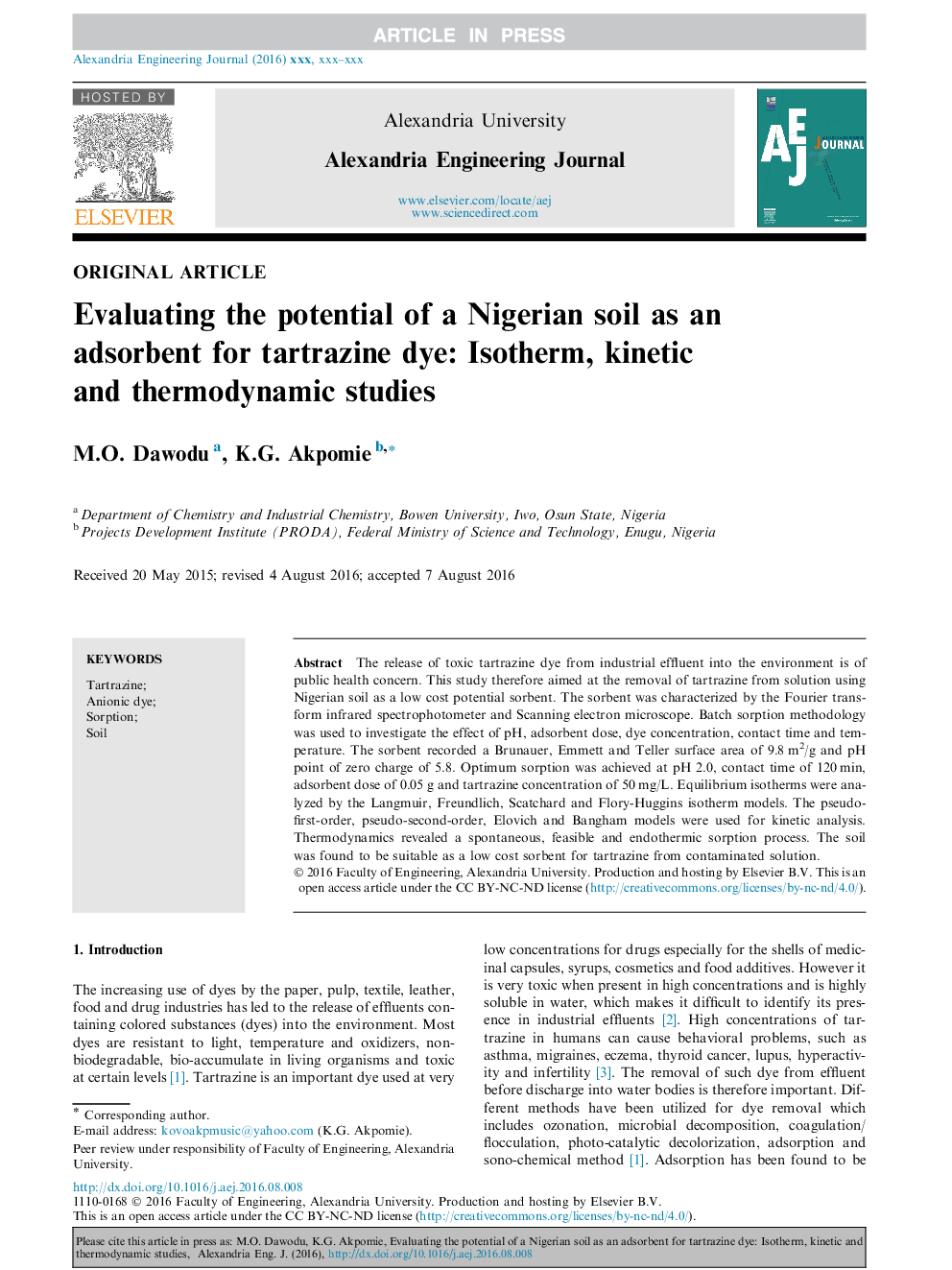| Article ID | Journal | Published Year | Pages | File Type |
|---|---|---|---|---|
| 7211150 | Alexandria Engineering Journal | 2016 | 8 Pages |
Abstract
The release of toxic tartrazine dye from industrial effluent into the environment is of public health concern. This study therefore aimed at the removal of tartrazine from solution using Nigerian soil as a low cost potential sorbent. The sorbent was characterized by the Fourier transform infrared spectrophotometer and Scanning electron microscope. Batch sorption methodology was used to investigate the effect of pH, adsorbent dose, dye concentration, contact time and temperature. The sorbent recorded a Brunauer, Emmett and Teller surface area of 9.8Â m2/g and pH point of zero charge of 5.8. Optimum sorption was achieved at pH 2.0, contact time of 120Â min, adsorbent dose of 0.05Â g and tartrazine concentration of 50Â mg/L. Equilibrium isotherms were analyzed by the Langmuir, Freundlich, Scatchard and Flory-Huggins isotherm models. The pseudo-first-order, pseudo-second-order, Elovich and Bangham models were used for kinetic analysis. Thermodynamics revealed a spontaneous, feasible and endothermic sorption process. The soil was found to be suitable as a low cost sorbent for tartrazine from contaminated solution.
Keywords
Related Topics
Physical Sciences and Engineering
Engineering
Engineering (General)
Authors
M.O. Dawodu, K.G. Akpomie,
